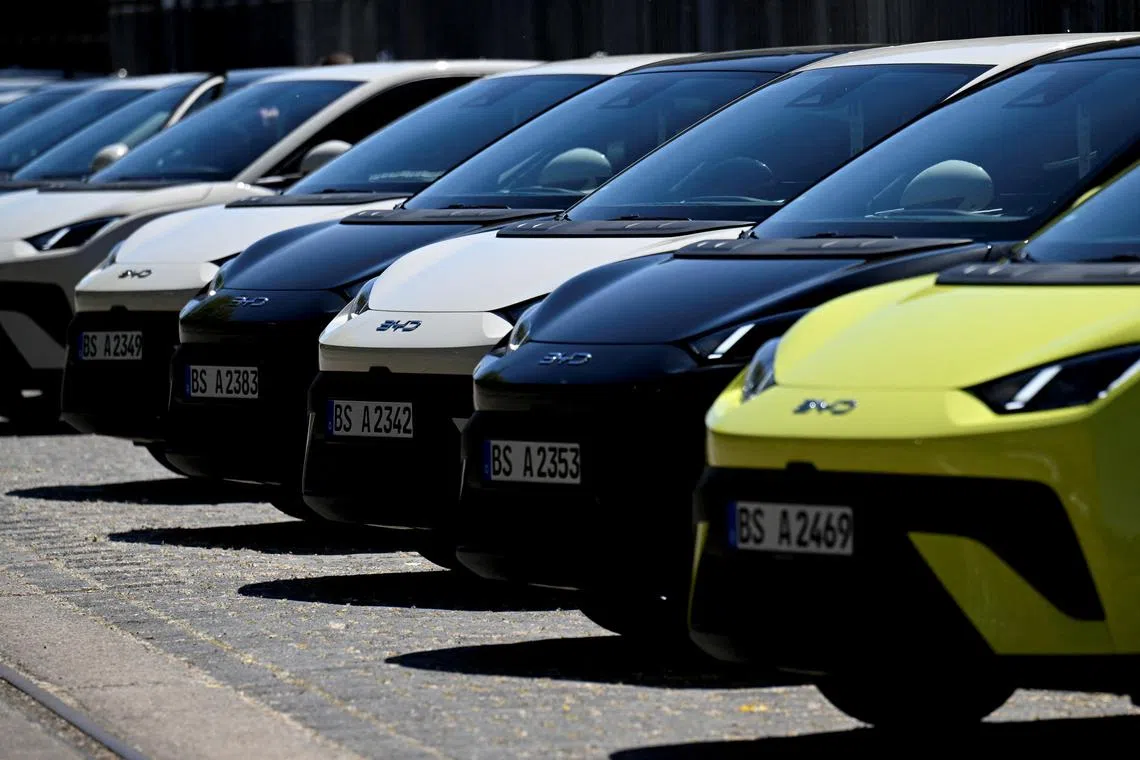Torque Shop: How to drive an EV efficiently
Sign up now: Get ST's newsletters delivered to your inbox

Accelerating smoothly and anticipating the traffic ahead will help an EV go farther on a single charge.
PHOTO: REUTERS
Follow topic:
How is driving an electric vehicle (EV) different from cars that have engines?
Essentially, there are no special rules to driving an EV, but drivers can cultivate a number of habits to maximise efficiency and, hence, range.
First, the keys to efficient driving, regardless of the type of car, are smooth acceleration, anticipating traffic slowdown and braking.
These habits are even more critical with EVs because hard acceleration, in particular, depletes the battery’s stored energy rapidly. In city driving, accelerating quickly from the traffic light usually also means you need to brake hard before the next junction. While the EV recuperates some energy during braking, this never equates to the energy consumed during acceleration.
On that topic, some EV models offer different settings on the amount of regenerative braking that kicks in when the driver eases the accelerator.
Take some time to learn the car’s behaviour before deciding why and when to use the different settings. For example, the maximum regeneration mode is useful in stop-start traffic. At the same time, this setting may cause excessive retardation, which requires you to throttle again when approaching a stop or an incline.
On expressways, you may discover that minimum regeneration reduces energy consumption, because the car coasts along with no energy consumption and little retardation whenever the accelerator pedal is released.
For owners of new electric cars, the running-in process is, fortunately, not as elaborate or regimented in comparison to vehicles with internal combustion engines. The electric “engine” does not require a special routine for running-in, mainly because there are no moving parts that reciprocate or slide.
However, every EV does have a transmission, albeit a simple single-speed gearbox, a differential, suspension and brakes.
In general, for any vehicle, EV or otherwise, these parts do need a short period of 2 to 3km to warm up so they can perform their best. Besides, it is always a good habit to check that the brakes work fine, and there are no unusual noises coming from the drivetrain or suspension, or when braking.
Finally, be aware that aerodynamics is a critical factor in the design of any EV. This is because air resistance increases proportionately more as speed rises, increasing energy consumption. Mathematically, air resistance increases four times when speed doubles. Of course, this applies to any vehicle, but with an EV, raising energy consumption can significantly give rise to range anxiety.

